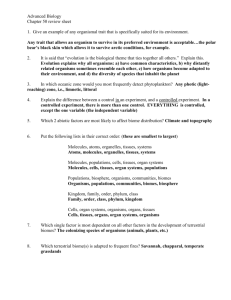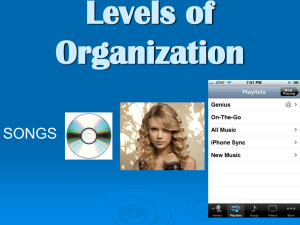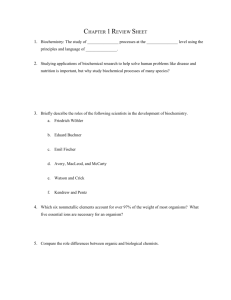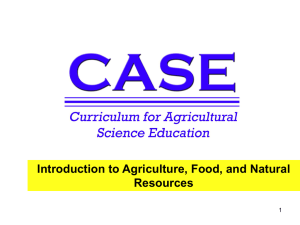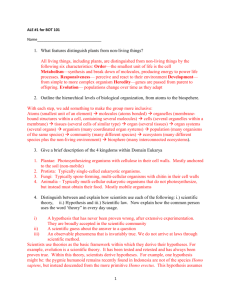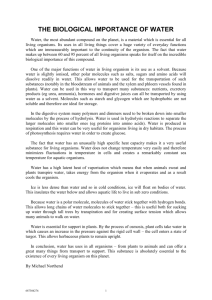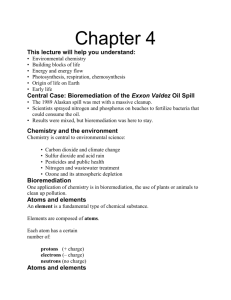Hierarchy of Matter
advertisement
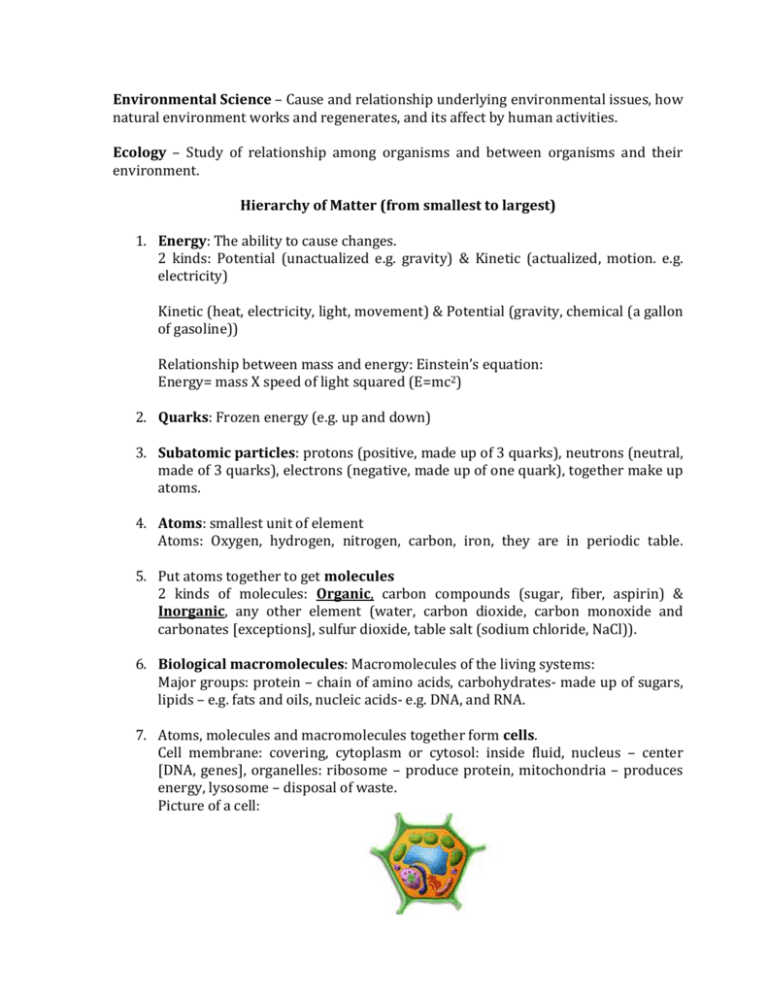
Environmental Science – Cause and relationship underlying environmental issues, how natural environment works and regenerates, and its affect by human activities. Ecology – Study of relationship among organisms and between organisms and their environment. Hierarchy of Matter (from smallest to largest) 1. Energy: The ability to cause changes. 2 kinds: Potential (unactualized e.g. gravity) & Kinetic (actualized, motion. e.g. electricity) Kinetic (heat, electricity, light, movement) & Potential (gravity, chemical (a gallon of gasoline)) Relationship between mass and energy: Einstein’s equation: Energy= mass X speed of light squared (E=mc2) 2. Quarks: Frozen energy (e.g. up and down) 3. Subatomic particles: protons (positive, made up of 3 quarks), neutrons (neutral, made of 3 quarks), electrons (negative, made up of one quark), together make up atoms. 4. Atoms: smallest unit of element Atoms: Oxygen, hydrogen, nitrogen, carbon, iron, they are in periodic table. 5. Put atoms together to get molecules 2 kinds of molecules: Organic, carbon compounds (sugar, fiber, aspirin) & Inorganic, any other element (water, carbon dioxide, carbon monoxide and carbonates [exceptions], sulfur dioxide, table salt (sodium chloride, NaCl)). 6. Biological macromolecules: Macromolecules of the living systems: Major groups: protein – chain of amino acids, carbohydrates- made up of sugars, lipids – e.g. fats and oils, nucleic acids- e.g. DNA, and RNA. 7. Atoms, molecules and macromolecules together form cells. Cell membrane: covering, cytoplasm or cytosol: inside fluid, nucleus – center [DNA, genes], organelles: ribosome – produce protein, mitochondria – produces energy, lysosome – disposal of waste. Picture of a cell: 8. Tissues: Connective tissue (bone, cartilage, blood), epithelial tissue (covering), muscle tissue, nerve tissue. 9. Tissues together form organs: Liver, heart, brain, kidney 10. Organ systems: Nervous system, digestive system, respiratory system, cardiovascular (circulatory) system, urinary system. 11. Organ systems together form organisms or individuals (people, cats, dogs, and trees) 12. Populations: A group of organisms of the same species (organisms, which produce fertile offsprings). 13. Communities: a group of populations. 14. Ecosystems: A group of plants, animals and other living systems interacting with each other and with their environment. 15. Biomes: A number of closely related ecosystems. 16. Biosphere: Atmosphere (air), hydrosphere (water), lithosphere (earth’s crust). Atmosphere: Thermosphere (low air density, highest level), mesosphere (temperature increasing as we ascend), stratosphere (where ozone is formed), troposphere (where clouds and pollution accumulate, lowest level). 17. Earth 18. Planets and stars 19. Solar system 20. Galaxies 21. Cosmos or universe Physics: Study of energy, quarks, and subatomic particles. Chemistry: Study of atoms and molecules. Biochemistry: Study of biological macromolecules. Biology: Study of cells, tissues, organs, organ systems, and organisms Cytology or cell biology: Study of cells. Histology: Study of tissues. Anatomy: Study of living system structures. Physiology: Study of living system functions. Ecology and environmental science: Study of populations, communities, ecosystems, biomes, and biosphere. Geology: Study of Earth. Astronomy: Study of planets, stars, solar systems, and galaxies. Cosmology: Study of cosmos.

